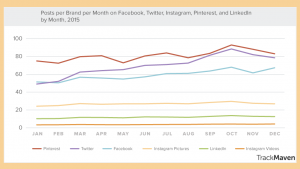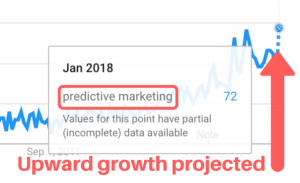Here’s what you need to know about generative AI in marketing and why it’s worth paying attention to.
It’s almost impossible to ignore the impact of artificial intelligence on businesses today. The marketing industry is no exception. From ChatGPT’s rise as the fastest-growing platform of all time to near-constant headlines on the latest AI-related product releases, we are inundated.
But with all the hype, how can marketing leaders and their teams best determine how to utilize AI to benefit their work and customers? This four-part series will explore four categories of artificial intelligence (AI) and how they can meaningfully impact marketers and their customers.
This first article of the series will look at generative AI, a category that includes tools you might have used — or at least heard plenty about — like OpenAI’s ChatGPT or Google’s Bard (focused on generating text responses to queries), MidJourney and Dall-E (focused on generating imagery) and many others. This category may be very familiar to you, but we’ll take a fresh look at it here before moving on to other uses of AI in the subsequent parts of this series.
What is generative AI?
Generative AI uses existing text, imagery and other information and creates new content from those sources. They use underlying technologies like GPT (Generative Pre-trained Transformer, used for text generation) or Stable Diffusion (used for image generation). They are trained on specific or more general sets of data and information.
Some commonly used generative AI tools include:
- ChatGPT (text)
- DALL-E and MidJourney (image)
This category of AI requires the user to provide a prompt to generate output. It is important to note that everything generated is based on some prior learning or source text, images or other materials, and the base technology continues to evolve. That, combined with the materials that the tools are “trained” on, determines the quality of the output.
Why it’s worth paying attention to
While generative AI is still in its infancy, it can still be a great source of new ideas. Think of it as an idea generator that provides the foundation for creative work. By asking ChatGPT for 10 ideas for blog posts, you might get 3-4 solid ideas (meaning 6-7 will get discarded), but that is still quicker and easier than brainstorming when you are on a deadline.
Another way of thinking of generative AI is as a starting point for tasks, knowing that what you are getting is preliminary to even a first draft. But, if you know that going in, the tool is only meant to cure writer’s block (in the case of text-based content) or give your illustrators or designers a rough idea of the visuals you have in mind.
Finally, generative AI is beginning to be used in the context of personalization. Looking at it as a pure personalization engine is still a bit of a stretch, but there are some interesting use cases within limitations.
Text-based generation of personalized variations and image-based ones that restrict copyrighted images and brand-safe elements are already being used, at least in limited ways. This area may have the most potential because of the prohibitive scaling issues associated with creating content required for hyper-personalization.
Near-term potential
Although there is still much room for improvement, marketers can look forward to a couple of things in the (hopefully) near future.
Using it as an idea generator or as a starting point for creative content presents nearly limitless opportunities. It is one of the reasons you have probably heard so much about generative AI recently, as ChatGPT has also become the most quickly adopted software platform of all time.
Greater personalization opportunities will also continue to be available, particularly as the quality of results and the ability to restrict specific source material and keep things “brand safe” becomes more sophisticated.
What to watch out for
Generative AI is arguably the most-hyped flavor of artificial intelligence tools at the moment. That said, it is far from perfect, and there are some areas that marketers and others that wish to utilize it should watch out for.
First, there are easily avoidable errors that generative AI can sometimes introduce into otherwise compelling or interesting text or visuals. For instance, generating images of humans with four fingers or in impossible poses made some early examples of this type of AI not quite ready for prime time.
While the image tools have improved and are making these errors less often, there are still other things you will want to watch out for that might be more nuanced. These might include the background imagery or anonymous people in a crowd with odd errors.
Another potentially larger issue is the rights of the images used as source material. Because generative AI bases its responses to prompts on existing materials — essentially whatever it was “trained” on — the sources of those materials matter greatly. Because of this, there can be plagiarism and copyright issues if care is not taken to avoid using copyrighted images as source material.
We have already seen some lawsuits around this, and the potential for more exists.
Conclusion
As you can see, generative AI has some compelling current uses and holds considerable potential, but marketers should also proceed with caution before wholesale adoption.
In the next article in this series, we will look at another area where AI can play an impactful role in marketing: predictive analytics.
The post The 4 categories of AI that impact marketing: Generative AI appeared first on MarTech.
MarTech(2)




